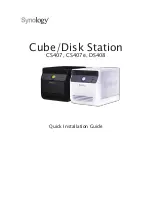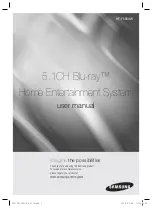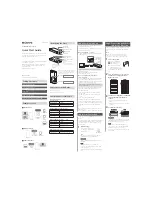
3
Glossary
DRAM
(Dynamic RAM) See RAM.
E
ECC
(Error Checking and Correction) A method of detecting and
correcting errors.
EEPROM
(Electrically Erasable Programmable Read-Only Memory) A type of
memory device that stores password and configuration information.
EGA
(Enhanced Graphics Adapter) A type of video display system that
provides medium-resolution text and graphics on TTL monochrome,
color, and enhanced color monitors.
EMS
(Expanded Memory Specification) A method of accessing memory
beyond the 640K limit of DOS by exchanging data in and out of
main memory at high speeds. Some software requires EMS to
operate.
EPROM
(Erasable Programmable Read-Only Memory) A type of memory
device that is usually used to store system BIOS code. This code can
be erased with ultraviolet light, but is not lost when the computer is
powered off. See also flash EPROM and ROM.
expanded memory
See EMS.
expansion slot
See backplane slot.
extended memory
The protected memory above 1M that is directly accessible by the
microprocessor through certain utilities and operating systems.
This memory is used in computers with 80286, 80386, and 80486
microprocessors.
F
flash EPROM
A type of memory device that is usually used to store system BIOS
code. This code can be replaced with updated code from a floppy
disk, but is not lost when the computer is powered off. See also
EPROM and ROM.
floppy disk drive
See disk drive.
format
The process used to organize a hard or floppy disk into sectors so it
can accept data. Formatting destroys all previous data on the disk.
G
(Gigabyte)
1,073,741,824 bytes. See also byte.
Summary of Contents for MT2200
Page 1: ... Server MT2200 U s e r s G u i d e ...
Page 2: ...xxx ...
Page 3: ... Server MT2200 U s e r s G u i d e ...
Page 6: ... xxx ...
Page 8: ...Bill Graham ...
Page 10: ...Bill Graham ...
Page 11: ...Chapter 1 Introduction Contents Organization 1 Notational Conventions 3 ...
Page 12: ...Bill Graham ...
Page 18: ...xxx ...
Page 46: ...xxx ...
Page 54: ...1231231 Billy Graham ...
Page 88: ...4 34 Configuring Your System ...
Page 90: ...xxxxx ...
Page 107: ...5 17 Upgrades and Options Figure 5 7 Inserting Memory DIMMs A B C J20 J19 J18 J17 ...
Page 134: ...5 44 Upgrades and Options Figure 5 22 Removing the Front Fan modules ...
Page 136: ...5 46 Upgrades and Options ...
Page 138: ...dfgdfg ...
Page 166: ...Bill GrahamBill Graham ...
Page 175: ...Appendix B Memory Configurations Contents Memory DIMM Configurations 1 ...
Page 176: ...Bill Grahamaerrterterter ...
Page 180: ...rtyrtyrtyrtyry ...
Page 190: ...8 Glossary ...
Page 191: ...xx ...
Page 192: ... 101907 01 ...








































